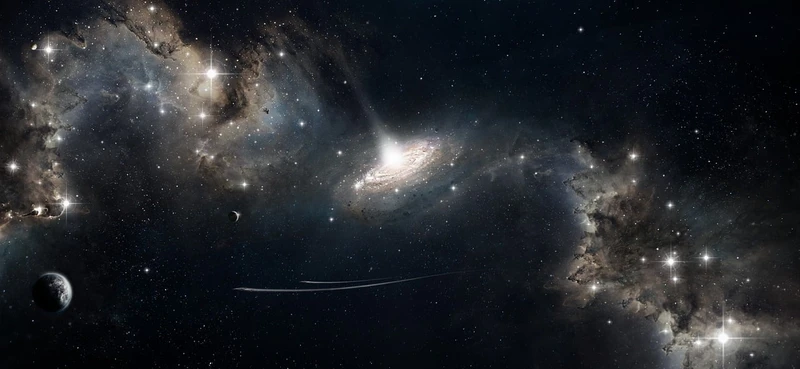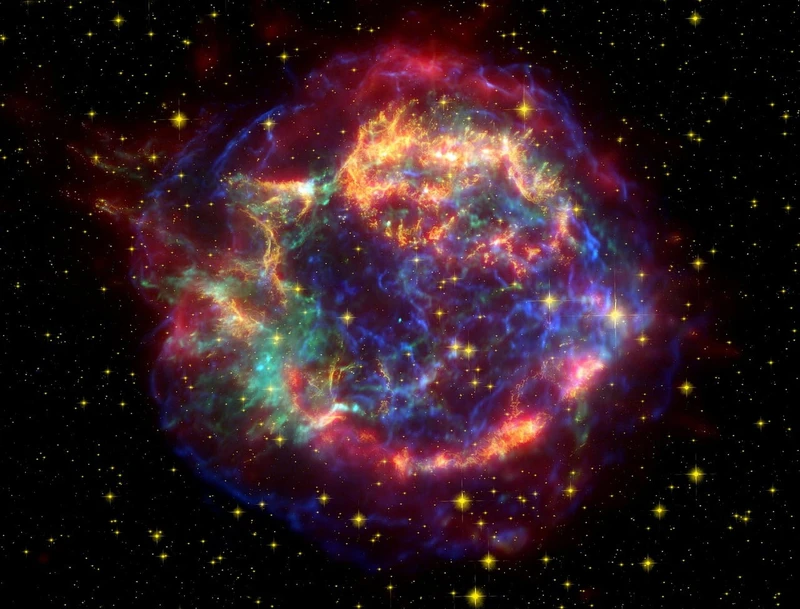Scientists report the astonishing news that after the Big Bang, time in the Universe flowed five times slower than it does now. This conclusion was reached by researchers while observing quasars – the brightest emitters of light and radio waves in space.
Quasars as “clocks” for measuring time in the past
According to the head of the research, astrophysicist Gerraint Lewis, people do not have a good understanding of time and its limitations. For humanity, time travel still remains a fantastic dream. However, new research brings us closer to understanding the processes of the Universe’s expansion after the Big Bang.
Scientists used quasars as a “clock” to measure time in the distant past. As is known, these astronomical objects, located at the centers of galaxies, are trillions of times brighter than the Sun.

In a study led by Professor Lewis, scientists examined the brightness of 190 quasars across the universe – from relatively new ones (2.45 billion years ago) to the oldest ones that formed shortly after the Big Bang (12.17 billion years ago). The data across the wavelength range was collected over two decades.
Up to 200 observations were conducted for each of these quasars. A comparison of the brightness of these objects at different wavelengths revealed that certain fluctuations in the oldest quasars occurred five times more slowly than in the newest ones.
Time is a complex substance even for physicists.
Einstein, in his general theory of relativity, claimed that time and space are interconnected, and the Universe has been expanding outward in all directions since the Big Bang. Professor Lewis notes that this continuous expansion explains how time passed more slowly earlier in the history of the Universe compared to today.
However, according to the astrophysicist, this is not at all what happens during slow motion. If one could move to a newborn Universe, then one second would seem like one second.

From our present perspective, that early time seems to stretch. Therefore, from today’s person’s point of view, a second back then would unfold over 5 seconds. Explaining this, Professor Lewis adds that in modern physics time – quite a complicated thing.
In everyday life, the relationship between time and space is not very noticeable. However, a clear example can be given. One should recall how the sound of an ambulance siren stretches as the ambulance rushes to a call. In this case, the vehicle is analogous to a distant galaxy, and the sound of the siren represents light.
Radiation is normal at its source, but from our perspective, it becomes stretched. Something similar happens with time. When observing distant objects, scientists look into the past because light takes time to travel across cosmic distances.
Supernovae and quasars in the study of time in space
As noted by the publication Daily Mail Earlier, scientists documented a slowdown in the passage of time about 7 billion years ago when observing supernova explosions. Time flows normally for both us and those who might have been near the epicenter of this phenomenon as it occurred. However, due to the relative speed between the two points, it seems to us that the process there is happening as if in slow motion.
Knowing exactly how much time is needed for the explosion and fading of supernovae has allowed scientists to detect their explosions at great distances from Earth in the past. It turned out that these events burned more slowly than from our time perspective.

However, the explosions of individual supernovae cannot be seen at certain distances. Therefore, their use in studying the early Universe is limited.
Quasars are so bright that they can be observed all the way back to the early stages of the universe. However, as Professor Lewis explains, while a supernova is like a flash of light, quasars are more akin to a continuous fireworks display, and their brightness fluctuations can be compared to small but sometimes sharp fluctuations in the stock market.
Confirmation of Einstein’s theory regarding time
It was previously believed that the variability of quasars does not exhibit time dilation effects. However, at that time, the research was not as extensive as it is now, and observations were conducted over a much shorter period.
It can currently be stated that ancient quasars indeed flicker in slow motion compared to more modern ones. This allows us to assert that they behave as predicted by Einstein’s theory of relativity. This is why the brightness of quasars – the best observable phenomenon over time – is explained by Professor Lewis.
